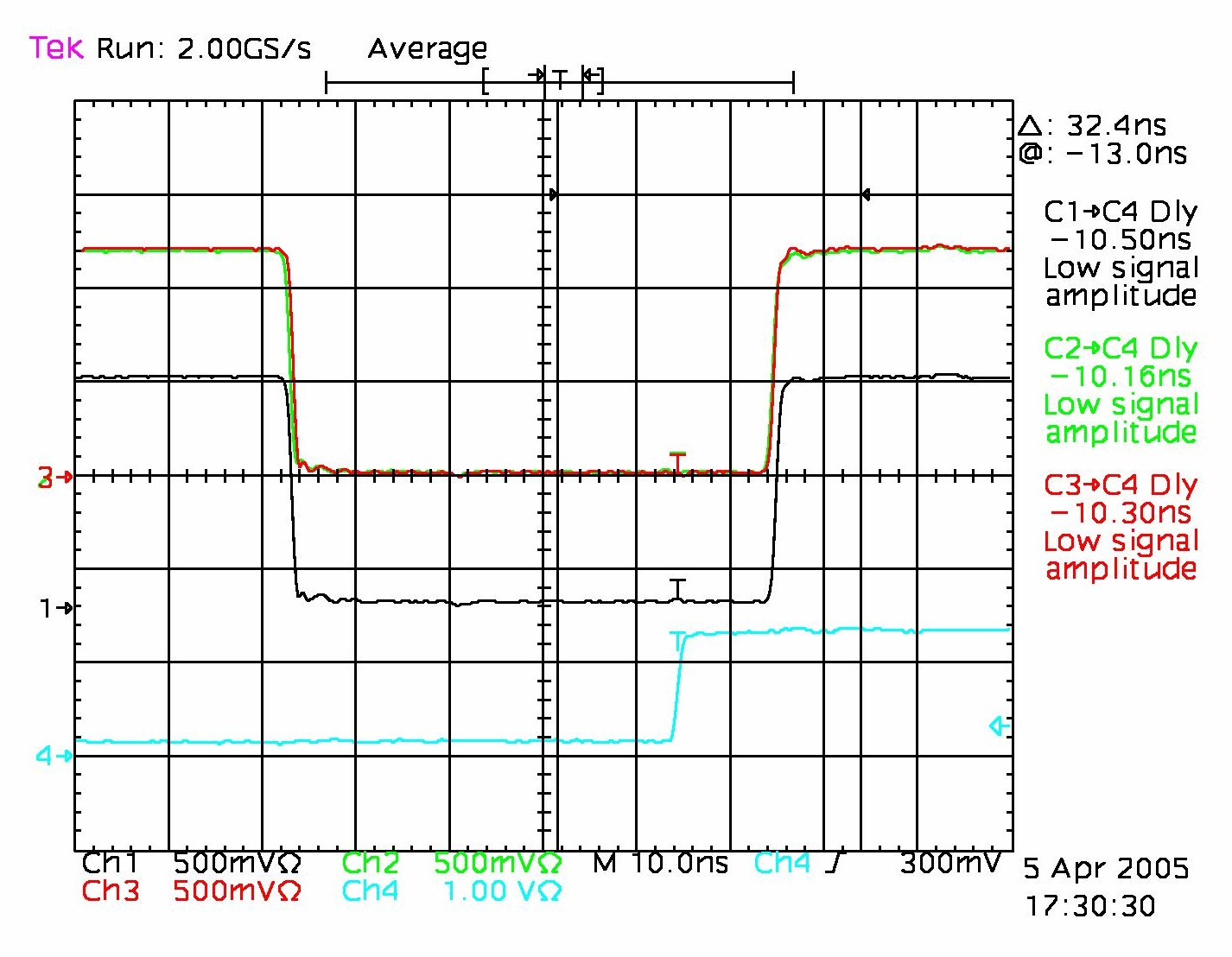

| 10 MHz GPS Output to lower LEMO
connector on DSB |
1Hz GPS Output to upper LEMO
connector on DSB |
Observed 1 Hz _↑‾ to 10 MHz _↑‾ timing (ns) |
| J5 |
J4 |
13.2 |
| J5 |
J6 |
26.1 (recommended) |
| J5 |
J8 |
13.4 |
| J7 |
J4 |
73.0 (recommended) |
| J7 |
J6 |
86.0 |
| J7 |
J8 |
73.2 |
| J9 |
J4 |
12.9 |
| J9 |
J6 |
26.0 |
| J9 |
J8 |
13.3 (recommended) |
| From |
To |
Behavior |
| 67ns |
95ns |
Trouble free |
| 8.0ns |
31ns |
Trouble free |
| 3ns |
4ns | Violation for DOR
Rev 0 |
| 5ns | 8ns |
Violation for DOR
Rev 1 |
| 10 MHz source |
1Hz source |
1 Hz _↑‾ to 10 MHz
_↑‾ timing (ns) |
| J5 |
J4 |
13.1 |
| J5 |
J9 | 13.3 |
| J6 |
J4 |
5.4
(Forbidden) |
| J6 |
J9 |
5.8
(Forbidden) |
| J7 |
J4 |
72.9 |
| J7 |
J9 |
73.2 |
| J8 |
J4 |
13.0 |
| J8 |
J9 |
13.2 |
| 1Hz
to 10 MHz Clock Skew at DSB JP4 |
1Hz, 10 MHz, and 20MHz clock
skew in DOR |
 |
 |
